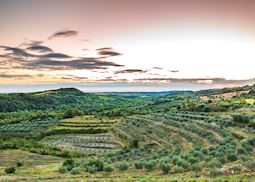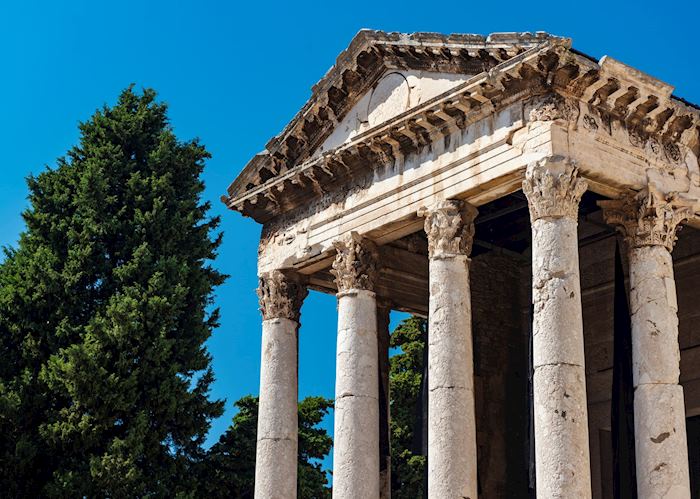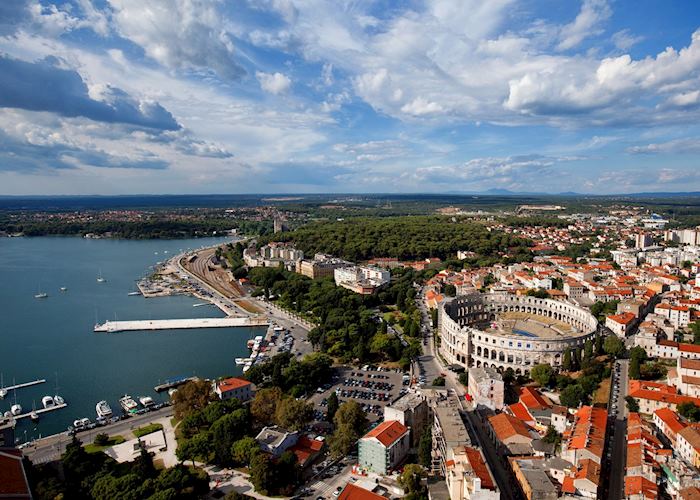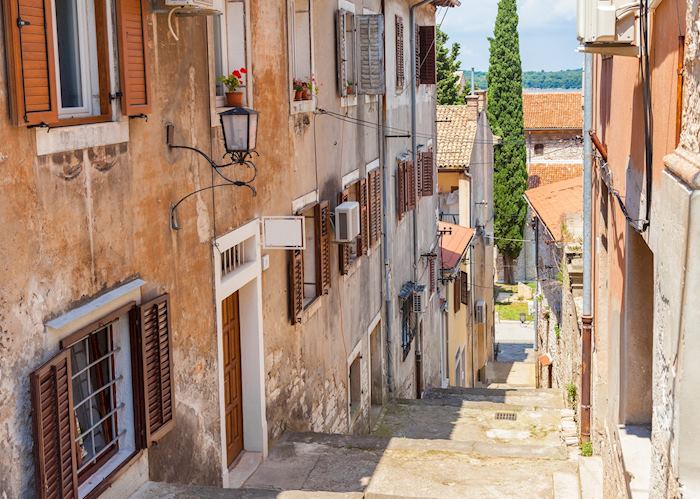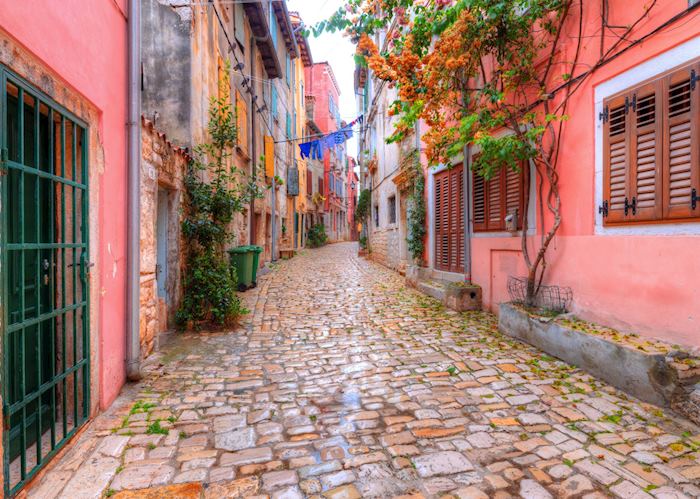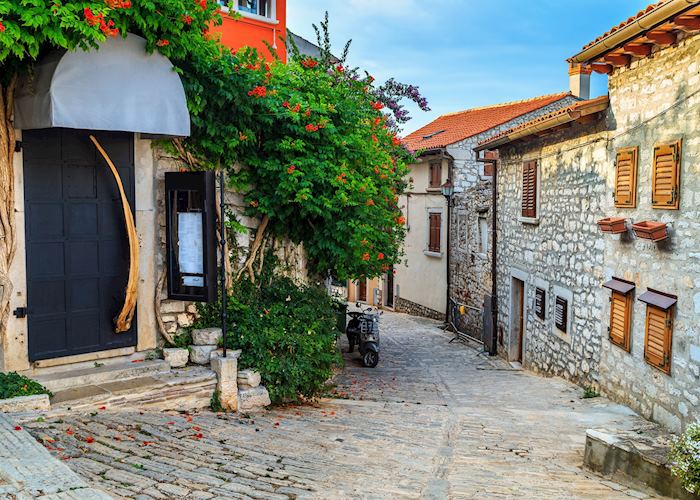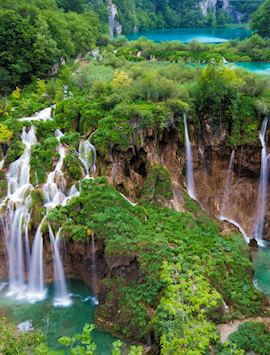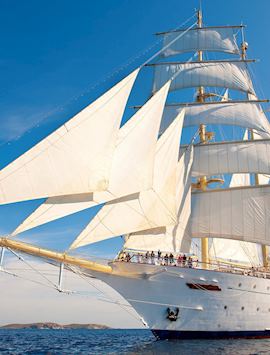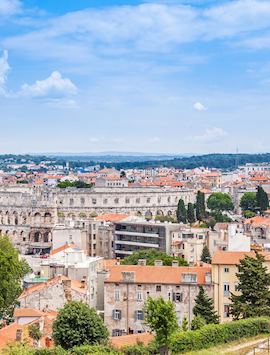Rovinj and Pula are two of Istria’s most scenic and historic coastal towns, and their small scale and narrow streets make them ideal for exploring on foot. On this full-day tour, you’ll be joined by an expert local guide for a private tour that takes in both towns and introduces you to the history and culture of Istria. Meander along cobbled streets, through small squares and into historic buildings as you learn about the influence of the Romans, Venetians, Byzantines and Austrians, and the architectural legacy they left behind.
Your private driver and guide will pick you up at your hotel in Bale or Rovinj on the morning of your tour and take you to Rovinj’s old town, a medieval port set on a headland that was once an island. Much changed over the years, Rovinj’s 13th-century walls were removed and the strait separating Rovinj from the mainland was filled in during the mid-18th century.
The old town still retains its stately charm with Venetian-style townhouses, steep, cobbled streets, and small, secluded squares. With your guide, you’ll walk to the highest point in the town to the Baroque Church of Saint Euphemia. Along with sweeping views over the Adriatic and the surrounding islands from the bell tower, you can see priceless artworks from the 15th to the 17th centuries inside.
From the church, you’ll make your way to Matteotti Square where cafés and outdoor terraces buzz with energy. Nearby, Grizia Street is flanked by small art galleries and boutiques. Wander into the cobbled backstreets, however, and you’ll find secluded residential scenes, laundry hanging from open windows, and everyday life in full flow.
You’ll have some free time to stop for lunch before continuing south along the coast to Pula, approximately 45 minutes’ drive away.
The highlight of a visit is Pula Arena, built in 27 BC. One of the largest remaining Roman arenas in the world, its exterior circuit of walls as well as most of its seating has been painstakingly restored.
Your guide will explain its history and importance as you walk among the 15 arched gates and 72 arches and visit the underground passageways which contain a permanent exhibit on the site’s excavation.
Next, you’ll head into the old town where you’ll see one of the few remaining city gates. It dates to the 1st century and is adorned with a delicate relief of Hercules.
Pula flourished as part of the Austro-Hungarian Empire when it was a shipbuilding hub, and much of the city’s architecture dates from the 18th and 19th centuries. As you walk its streets, your guide will tailor your route to your interests, taking in a variety of churches, shops and viewpoints.
The tour will finish by Pula’s main square, where three Roman temples are flanked by the city’s town hall. There are a handful of outdoor cafés where you can enjoy a coffee or wine before being driven back to your hotel.
